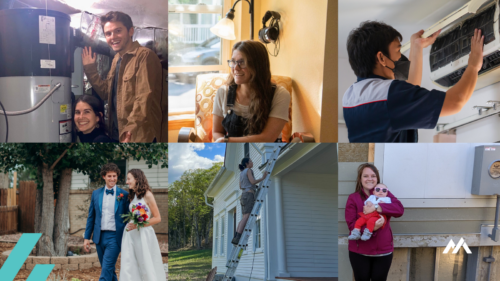
Five Steps to Electrify Your Home: From Heat Pumps to Solar Panels and Induction Stoves
RMI experts share their personal takes on how to approach decarbonizing your home
At Climate Week this year in New York City, green buildings will once again take center stage. After all, buildings account for about 39% of total US energy consumption and 40% of carbon emissions.
But for all the focus on the field’s biggest success stories — from retrofitting iconic skyscrapers such as the Empire State Building to transforming policy across 80 cities and counties to require or encourage the move off fossil fuels — the green building revolution is rapidly going local.
Spurred by fresh incentives in the Inflation Reduction Act (IRA), homeowners nationwide are pushing ahead with efforts to deploy fixes to their own properties that will cut energy consumption, boost indoor air quality, cut carbon emissions, and save money — including many of RMI’s own staff.
We spoke with a range of RMI employees who are on quests to electrify and improve the energy efficiency of their homes. Together, we identified five initial steps all homeowners can take to work toward all-electric, more efficient, and healthier homes.
All-electric, superefficient homes typically follow a common recipe. Ideally, the home is powered by renewable electricity, is well insulated, and well-sealed to reduce drafts from windows and doors. With those efficiency measures in place, superefficient electric heat pumps are key to both heat and cool the house and provide hot water. And in the kitchen, it means switching over to an electric induction stove.
Here’s how our staff tackled these changes:
Step 1: Value set – what benefits do you want out of your home improvement?
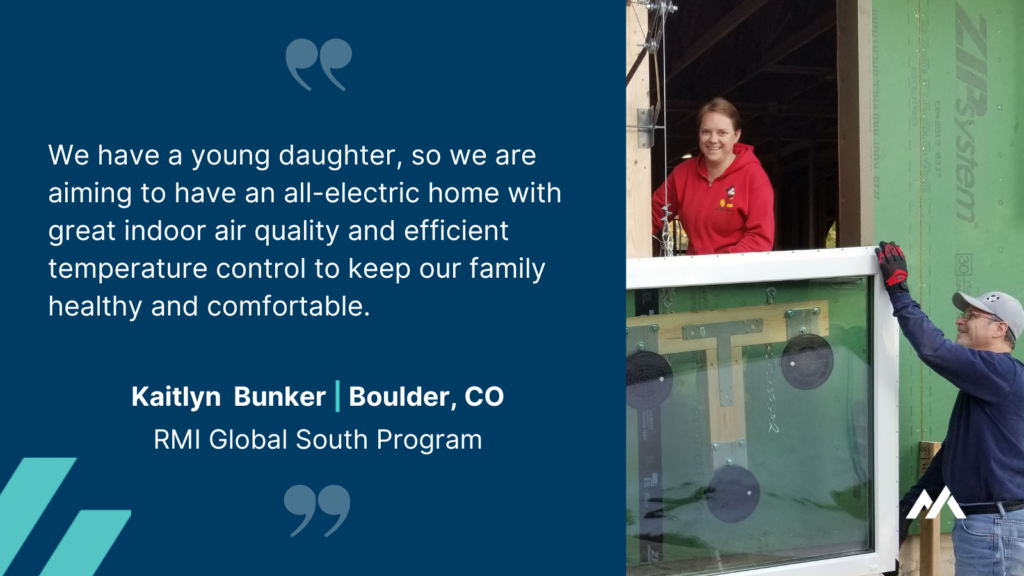
If you’re like most homeowners, your reasons to consider electrifying or improve the efficiency of your property is likely a mix of factors. Whether you’re aiming to prepare for the risk of searing heat waves or frigid cold spikes, protecting your family’s health, boosting home value, or simply want a more comfortable living environment, it’s important to be clear on your personal reasons for taking on this project. Even if the process gets tough, these goals can continue to motivate you toward improving your home.
RMI-er’s Top 5 Reasons to Electrify
If you’re not sure how to begin setting your goals, local and regional programs offer to assist homeowners in completing energy assessments that can identify opportunities and benefits specific to your home.
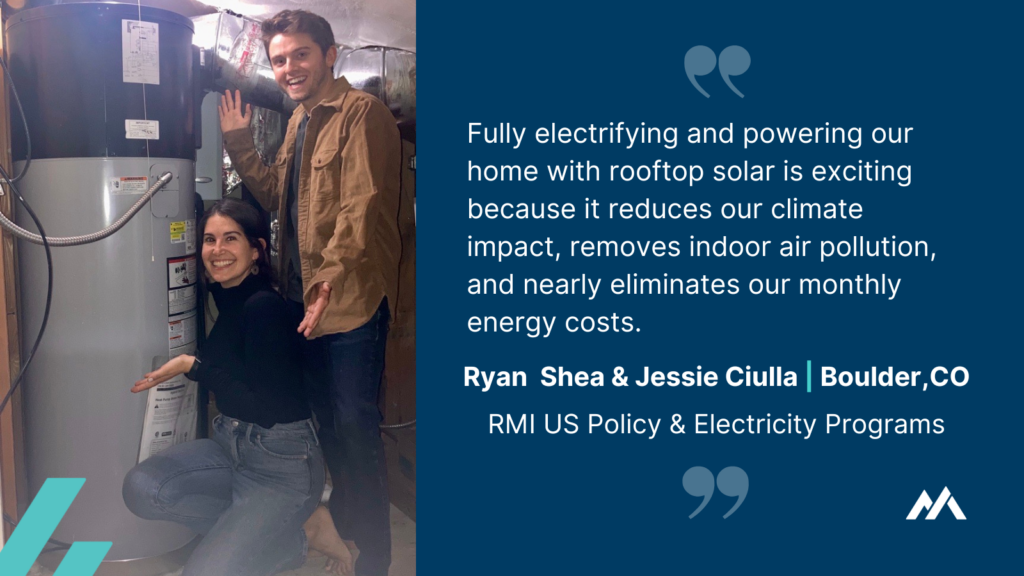
To find these programs, try national databases such as the Database of State Incentives for Renewables & Efficiency and the Department of Energy’s (DOE) Better Buildings Residential Network . You can also hunt using your preferred search engine: “Residential energy program [Insert your city or state]; Pro-electrification program [insert your city or state].”
Locally, you can often find pro-electrification Facebook groups for exchanging information in your area. Some examples of these programs that RMI-ers have worked with are Energy Smart in Boulder, Colorado and BayREN in the Bay Area, California.
Step 2: Get a home energy assessment
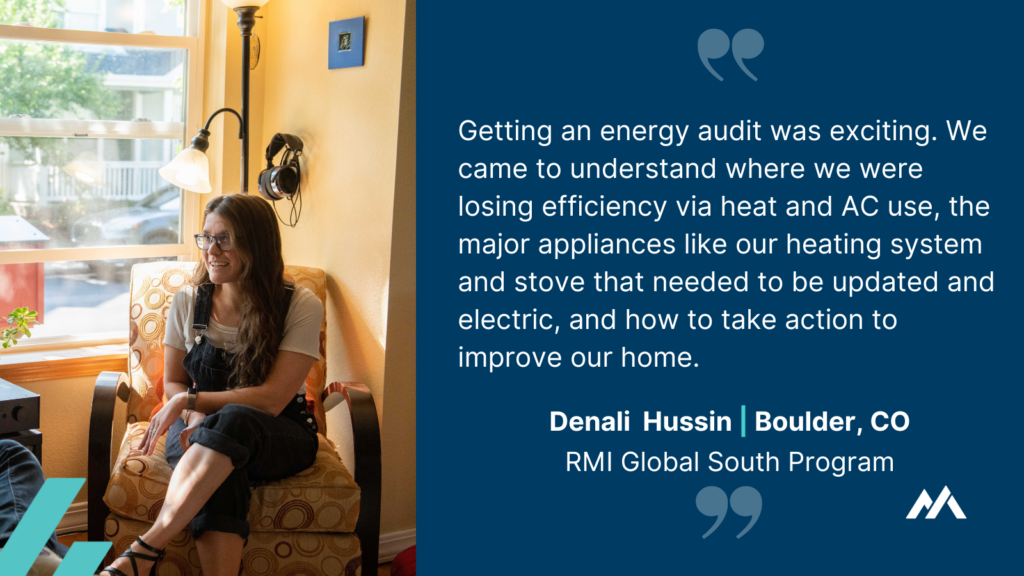
An energy audit or home energy assessment‘s purpose is to understand where energy is wasted in your home due to inefficient appliances, insufficient insulation and/or air sealing. This energy assessment can be conducted by a professional or by the homeowner.
The energy audit is essentially the homeowner’s roadmap for which improvements to take on, the optimal timeline for those projects, and how much savings can be realized over time. Energy audits are especially helpful in older, draftier homes that do not have proper insulation.
Local government or utility efficiency programs standardly provide lists of approved energy auditors. For eligible low-income households, the Department of Energy has the Weatherization Assistance Program to conduct free audits and assist with upgrades. Remember, if there is a local or regional pro-electrification program, they can also help you through the process and may already have home energy assessments available to you.
Step 3: Find reliable, reputable contractors who are excited about electrification
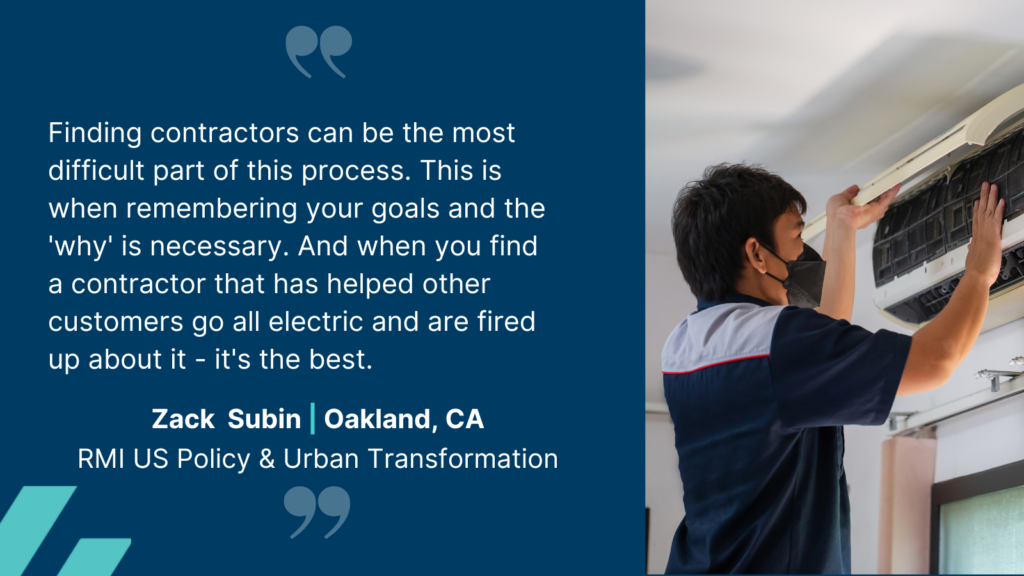
One of the most difficult elements of the process can be finding reliable, affordable contractors. Here is an RMI-er’s advice for finding the best fit:
- Choose from a reputable contractor list.
- If you have found a local/regional energy program, check to see if they have a database of vetted contractors who have successfully delivered on the same type of project.
- Consult a local pro-electrification network, for example in CA, there are state-sponsored networks including BayREN for the Bay Area.
- Bias towards local, reputed contractors who know local suppliers, tradespeople, and practices. Be wary of sales pitches.
- In initial conversations, be aware that some contractors do not fully understand the benefits of electrification. Be clear and firm about your goals (step 1). Prefer contractors that regularly install heat pumps and have experience with electrification.
- Compare different quotes with special attention to upfront cost, heating capacity at minimum outdoor operating temperature for cold climates, cooling and heating efficiencies, noise/decibel ratings.
- Sign a contract that is clear and make sure the contractor pulls the permit before you start the job.
- Do not pay in full until you are completely satisfied with the work.
Step 4: Find financing options including incentives, rebates, & climate loan programs with low interest rates
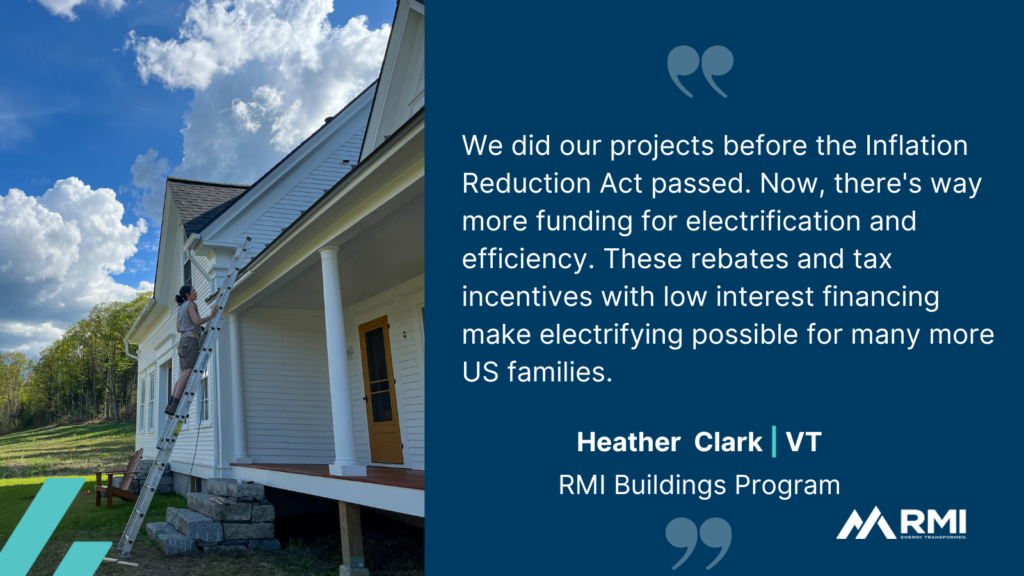
Between new funding sources available through the Inflation Reduction Act, existing government programs, and low-interest financing for measures that reduce carbon emissions, homeowners are in a better position than ever to make these improvements. The White House’s new toolkit provides homeowners with the information they need to take advantage of the IRA’s rebates and tax credits. Additionally, Rewiring America’s IRA calculator shows how much money you can get from the government. To find low-interest financing, check with your local credit unions and your bank as many institutions are rewarding homeowners who cut their emissions with lower rates. Often, your state energy office or your utility have staff that can explain the options available in your area if you give them a call.
STEP 5: Just Get Started!
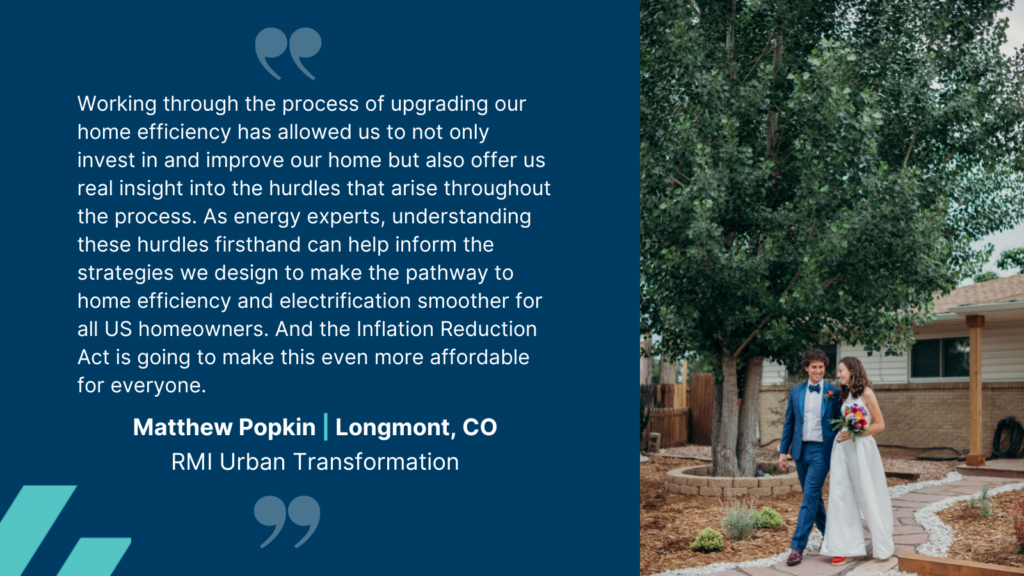
Many of our homes are not serving us as well as they could. With high energy costs, poor indoor air quality, and insufficient protection in the face of increased extreme weather such as heat waves and long cold spells, household upgrades have never been more timely.
US families need the tools and pathways to future-proof their homes. With the recent government investment of $50 billion in clean energy technologies and improvements for building emission reduction, it’s time for homeowners to act.
Take a page from some of RMI’s green home pioneers and begin your journey with a first step today.